
|
You entered: planets
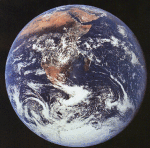 Welcome to Planet Earth
Welcome to Planet Earth
26.10.1997
Welcome to Planet Earth, the third planet from a star named the Sun. The Earth is shaped like a sphere and composed mostly of rock. Over 70 percent of the Earth's surface is water. The planet has a relatively thin atmosphere composed mostly of nitrogen and oxygen.
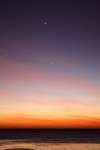 Dawn of the Planets
Dawn of the Planets
7.05.2011
This month, four of the five naked-eye planets gather along the eastern horizon near dawn. The celestial grouping is seen here just before sunrise on May 5, from a beach near Buenos Aires, Argentina. Starting near the top of the frame, the brightest beacon is Venus.
 Happy People Dancing on Planet Earth
Happy People Dancing on Planet Earth
10.07.2012
What are these humans doing? Dancing. Many humans on Earth exhibit periods of happiness, and one method of displaying happiness is dancing. Happiness and dancing transcend political boundaries and occur in practically every human society. Above, Matt Harding traveled through many nations on Earth, planned on dancing, and filmed the result.
 Pluto: The Frozen Planet
Pluto: The Frozen Planet
18.08.1995
The Hubble Space Telescope imaged Pluto and its moon Charon in 1994. Pluto is usually the most distant planet from the Sun but because of its elliptic orbit Pluto crossed inside of Neptune's orbit in 1979 and will cross back out again in 1999.
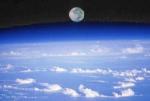 Moonrise, Planet Earth
Moonrise, Planet Earth
27.05.1997
During the Astro-1 astronomy mission of December, 1990, Space Shuttle astronauts photographed this stunning view of the full moon rising above the Earth's limb. In the foreground, towering clouds of condensing water vapor mark the extent of the troposphere, the lowest layer of the planet's life-sustaining atmosphere.
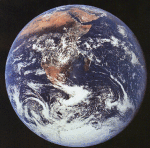 Welcome to Planet Earth
Welcome to Planet Earth
31.01.1999
Welcome to Planet Earth, the third planet from a star named the Sun. The Earth is shaped like a sphere and composed mostly of rock. Over 70 percent of the Earth's surface is water. The planet has a relatively thin atmosphere composed mostly of nitrogen and oxygen.
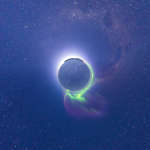 Little Planet South Pole
Little Planet South Pole
26.08.2022
Lights play around the horizon of this snowy little planet as it drifts through a starry night sky. Of course the little planet is actually planet Earth. Recorded on August 21, the digitally warped, nadir centered panorama covers nearly 360x180 degrees outside the Amundsen-Scott South Pole Station, Antarctica.
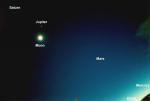 Sky and Planets
Sky and Planets
10.03.2000
On February 10th, an evocative evening sky above Rocklin, California, USA inspired astrophotographer Steve Sumner to record this remarkable sight - five planets and the Moon. Near its first quarter phase, the bright Moon...
 Stars and Planets in the Halo of the Moon
Stars and Planets in the Halo of the Moon
21.03.2003
Photographed on March 13th from Caledon, Ontario, Canada, a bright Moon was surrounded by this lovely halo. Planet Jupiter and stars Procyon, Castor, and Pollux also appear within the circle of lunar light. Castor...
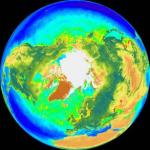 Ocean Planet Pole To Pole
Ocean Planet Pole To Pole
7.10.1998
The Sea-viewing Wide Field-of-view Sensor (SeaWiFS) instrument onboard the orbiting SeaStar spacecraft can map subtle differences in Earth's ocean color. These North (left) and South Pole projections are based on SeaWiFS measurements made between September 1997 and July 1998.
|
January February March April May June July |
|||||||||||||||||||||||||||||||||||||||||||||||||